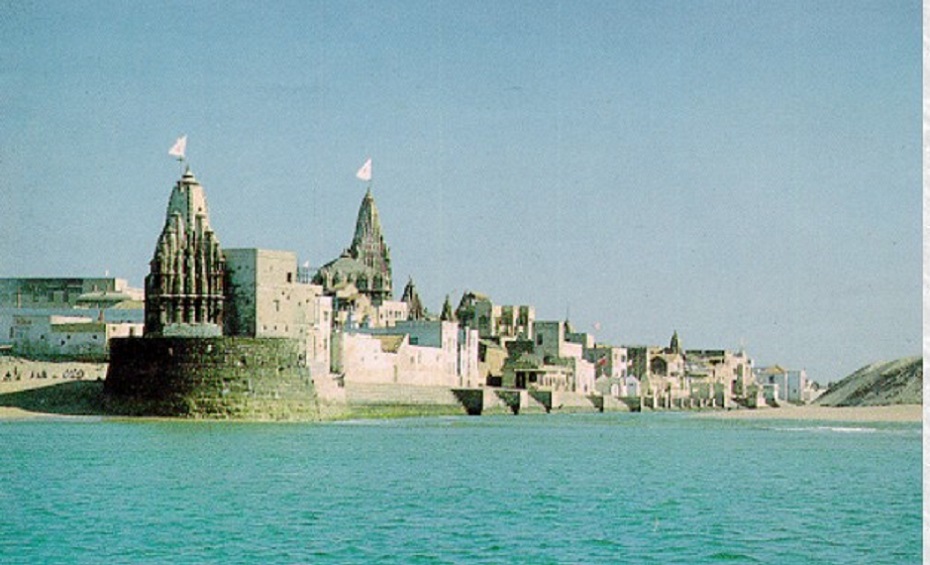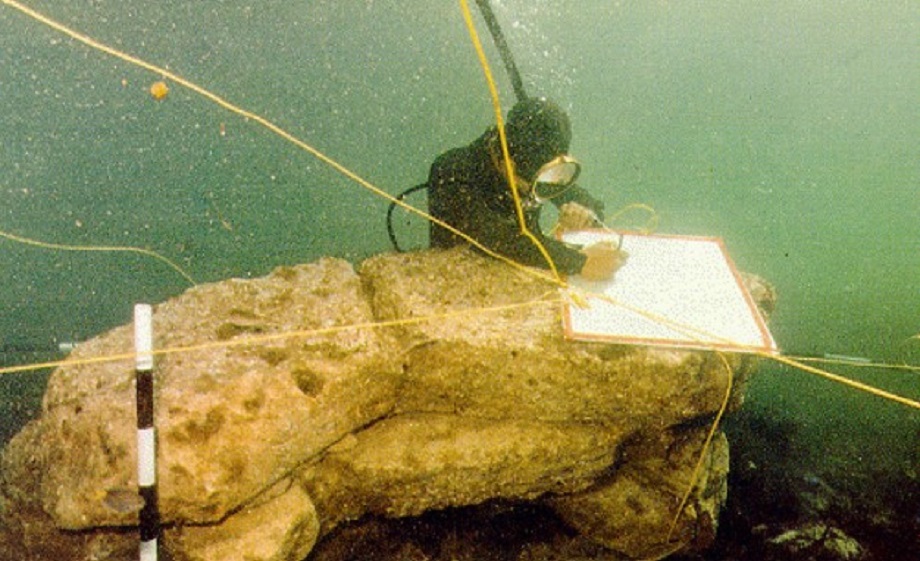Dwarka
This is a collection of articles archived for the excellence of their content. |
Excavations
UNESCO’s summary, 1930 onwards
The ancient Indian city of Dwarka is known in Hindu culture to have been the great and beautiful city of Krishna. The Hindu writings say that when Krishna left the Earth to join the spiritual world, the age of Kali began and Dwarka and its inhabitants were submerged by the sea. The tales of the submersion can also evoke a tsunami like the one that struck India in 2004.
The modern Dwarka is today one of the seven sacred towns of Hinduism, visited each year by pilgrims worshiping Krishna. The search for its submerged part began in the 1930s, and the first archaeological excavation took place in 1963. Numerous ancient artefacts were found, as well as the submerged remains of the ancient Dwarka during the next excavation led by an underwater archaeologist.
Between 1983 and 1990 the archaeologists discovered a fortified foundation on which the ancient city walls must have been built along the river banks. Stone blocks used for the construction, pillars and irrigation systems were found but a debate is still ongoing regarding the dating of the vestiges, either from 3 000 to 1 500 years BC or from the Middle Ages.
Numerous stone anchors have also been recovered on the site at the same depth, which suggests, along with the size of the submerged part of the ancient city, that Dwarka must have had a place in the trading relations between Indian and Arabic areas during the 15th to 18th centuries and must have been an important trade port in the past. The world ‘dwarka’ means ‘door’ or ‘gate’ in Sanskrit, so this ancient port city could have been a gate for foreign sailors who arrived in India.
1979 onwards
National Oceanic and Atmospheric Administration
Dwarka on the west coast of India, is a well known ancient port, now believed to have been submerged. The excavations carried out during 1979 in the Dwarkadhish Temple Complex revealed three temple remains. In all, eight settlements can be distinguished at Dwarka. The first settlement made in the 15th century B.C. was submerged or washed away and so also the second one made in the 10th century B.C. After a long gap the third settlement was made in the 1st century B.C./A.D. as suggested by the Red Polished Ware and copper coins known as Karshapanas. It is during this phase that Temple I, was built. The lime-plastered surface of its stone masonry still retaining a few lines of red ochre painting suggests that the plinth was open to view above the then working level. After the first temple was destroyed the second temple came to be built on the ruins of the first. When the second temple was also destroyed, the third temple was built in the 9th century. It was perhaps in the 12th century a storm-wave blew away the roof leaving only the walls and plinth. The fourth temple came into existence soon after. The present temple of Dwarkadhish is the fifth in the series. Temples I to V represent respectively settlements III to VII and the modern town is the eighth settlement at Dwarka. It is this sequence finding of which led to present explorations at Dwarka.
A marine archaeologist has to gather as much information as possible from literary sources and oral tradition before selecting a site for excavation. He has to visualize the plan and extent of the submerged city and salient features, if any.
During 1983-1992 underwater archaeological explorations have been carried out almost every year in Dwarka, Bet Dwarka and Somnath waters. The successive underwater investigations off Dwarka in about 4 to 12 m water depth have revealed the presence of a number of submerged
stone building blocks such as remains of wall, pillar and bastion and also stone anchors of various types like three-holed, prismatic and
triangular were noticed in various places. SDDE and SCUBA systems were used for the underwater exploration along with 'Aquazepp' the underwater scooter. The survey boats were chartered and were equipped with underwater camera, underwater TV system and airlift equipment for exploration and excavation.
At Dwarka approximately 9,80,000 sq. m area was explored between the water depth of 3 to 12 m off Samudranarayana Temple. Diving operations were undertaken in various locations covering 8 zones of detailed investigations. The important findings were documented mainly with still photography, underwater video filming and underwater drawings. The position of the objects were fixed with the help of sextants. The Geophysical survey equipment also used in Dwarka waters for survey purposes.
The onshore explorations nearby Bet Dwarka revealed the presence of Late Indus seal depicting 3 headed animal, earthen vessel inscribed in the characters of Indus-Brahmi transition phase of about 1500 B.C. and the large quantity of pottery similar to Lustrous Red Ware bowl and the Red Ware dishes, dish-on-stand, perforated jar and incurved bowls which are datable to 1600-1500 B.C. in Dwarka, Rangpur and Prabhas.
Among antiquities which are crucial to dating and determining the cultural sequence of submerged cities of Dwarka and Bet Dwarka are the Late Indus type seal, chert blades, an inscribed votive jar, 3-holed stone anchors, a stone-mould, an Olpin with loop-handle and a sprinkler-neck in pottery are important. The chronological sequence proposed on the basis of the antiquities can be corroborated by distinct ceramic wares.

